VAN ALLEN PROBES
Twin spacecraft designed to fly and operate in the heart of the most hazardous regions of near-Earth space and collect crucial data in the Van Allen radiation belts.
This mission was formerly known as the Radiation Belts Storm Probes or RBSP.
The data collected will let researchers finally begin to unlock the mysteries of the Van Allen radiation belts, two donut-shaped rings around the Earth made up of very high energy electrons and protons that can damage satellites and endanger humans during spaceflight.
General Science Objectives
- Discover which processes that – singly or in combination – accelerate and transport the particles in the radiation belts to create radiation belt enhancement events, and under what conditions
- Understand, quantify, and determine the dominant mechanisms for the loss of energetic electrons and protons from the radiation belts
- Determine the balance between the processes that cause electron acceleration and those that cause losses
- Understand how the radiation belts are affected by geomagnetic storms and related processes.
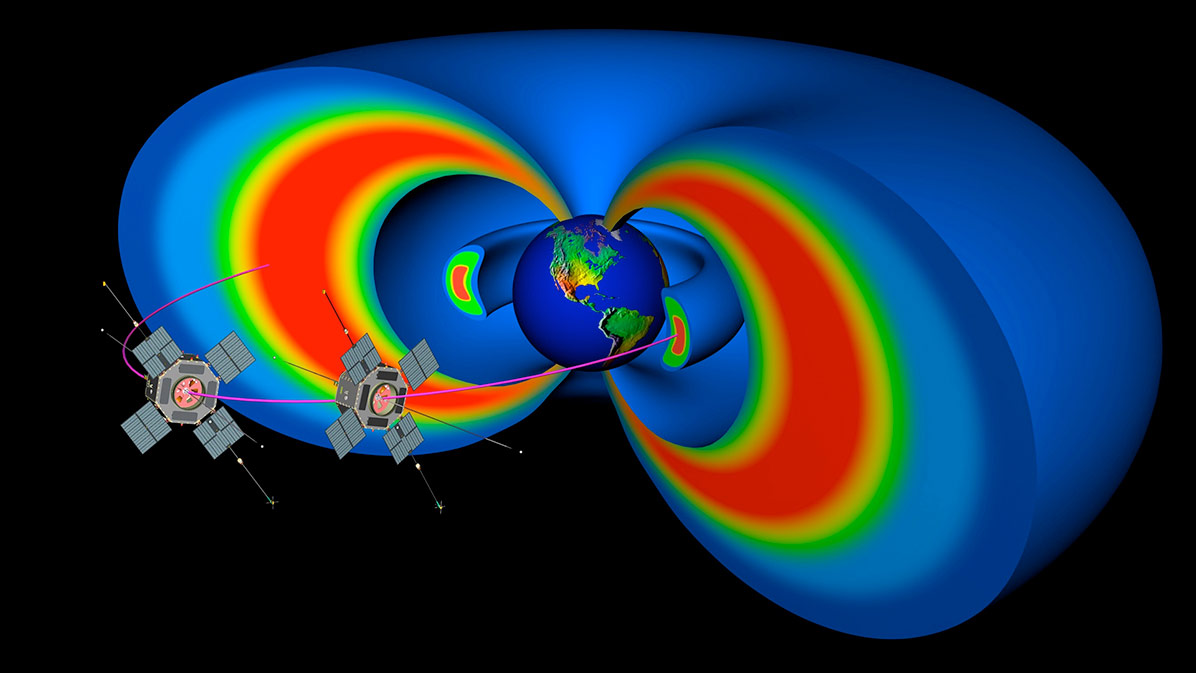
The Van Allen Probes will give scientists the data they need to understand how the invisible radiation belts (named for their discoverer, James Van Allen) behave and react to changes in the sun, thereby contributing to Earth’s space weather.
Space weather is caused in great part by the sun’s influence on the Earth and near-Earth space, and by such solar events as coronal mass ejections (CMEs).
Space weather fluctuations can increase the dose of radiation that pilots and passengers receive during polar aircraft flights, disable satellites, cause power grid failures, and disrupt Global Positioning System, television, and telecommunications signals. Understanding the science of space weather could one day help us to predict space weather – which in turn will allow us to better manage and protect technologies in space and on the ground.
The two-year Van Allen Probe mission will, for the first time, fly two satellites – carrying the best and most comprehensive instrumentation ever sent into the radiation belts – through surging and swelling belts of energized particles that would damage ordinary spacecraft. By using two spacecraft, scientists will be able to study the radiation belts over both space and time, providing a previously unavailable picture of how particles within the belts are produced and behave during space weather events, and what mechanisms drive the acceleration and loss of the particles.
The lessons learned about how particle acceleration works in the radiation belts can be applied to other objects and events across the universe. Understanding the belts and their variability is important for both fundamental physics knowledge, and will also have extremely important practical applications in the areas of understanding space weather and in spacecraft design and operations, mission planning, and astronaut safety.
The Van Allen Probe mission is part of NASA’s Living With a Star program to explore aspects of the connected sun-Earth system that directly affect life and society.
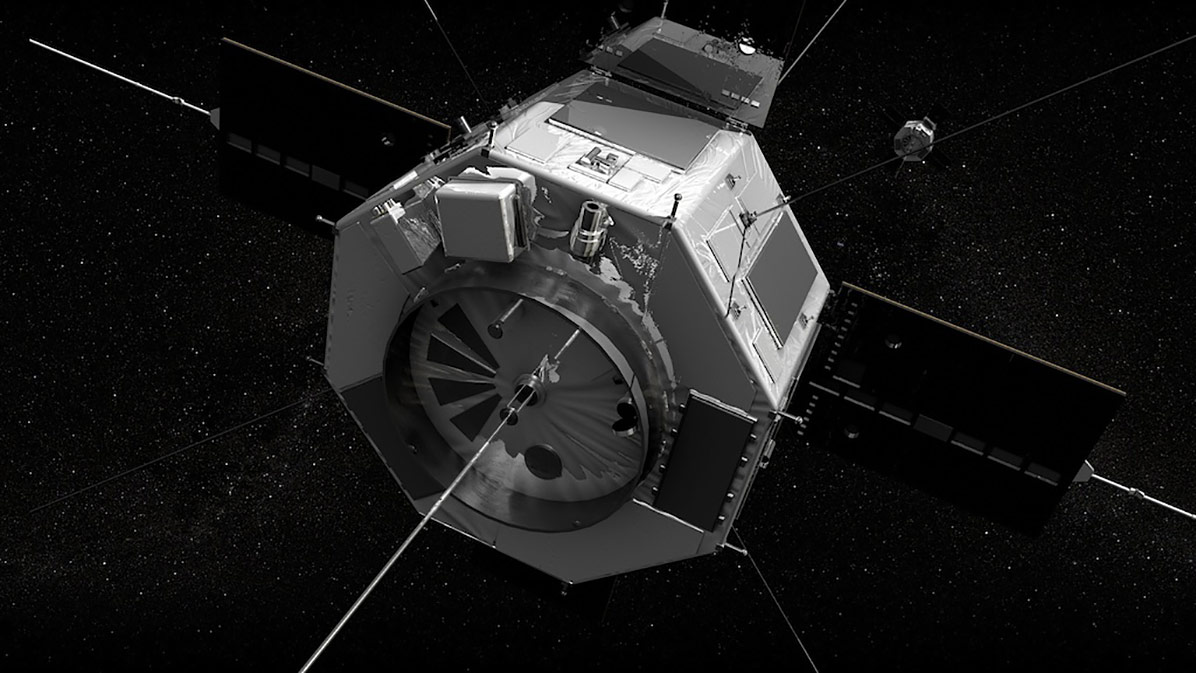
NASA’s Radiation Belt Storm Probes (RBSP) satellites were launched into space just before dawn on August 30, 2012.
The mission was designed like none before it to penetrate and observe the Van Allen Belts, two dynamic swaths of radiation surrounding Earth that can wreak havoc on spacecraft electronics and potentially harm astronauts.
Most satellites are put into orbit above or below the belts for protection. But, with thick aluminum shielding sensitive instruments, the twin RBSP satellites were built to go into the heart of the harshest radiation anywhere around Earth. As the belts vary unpredictably in size and intensity, the two identical spacecraft will provide multiple vantage points of these changes and ultimately lead to a better understanding of how energy from the sun affects the fluctuations. The visualization shows how the spacecraft will fly in an unusual, highly elliptical orbit to collect data throughout the vastness of the Van Allen Belts.
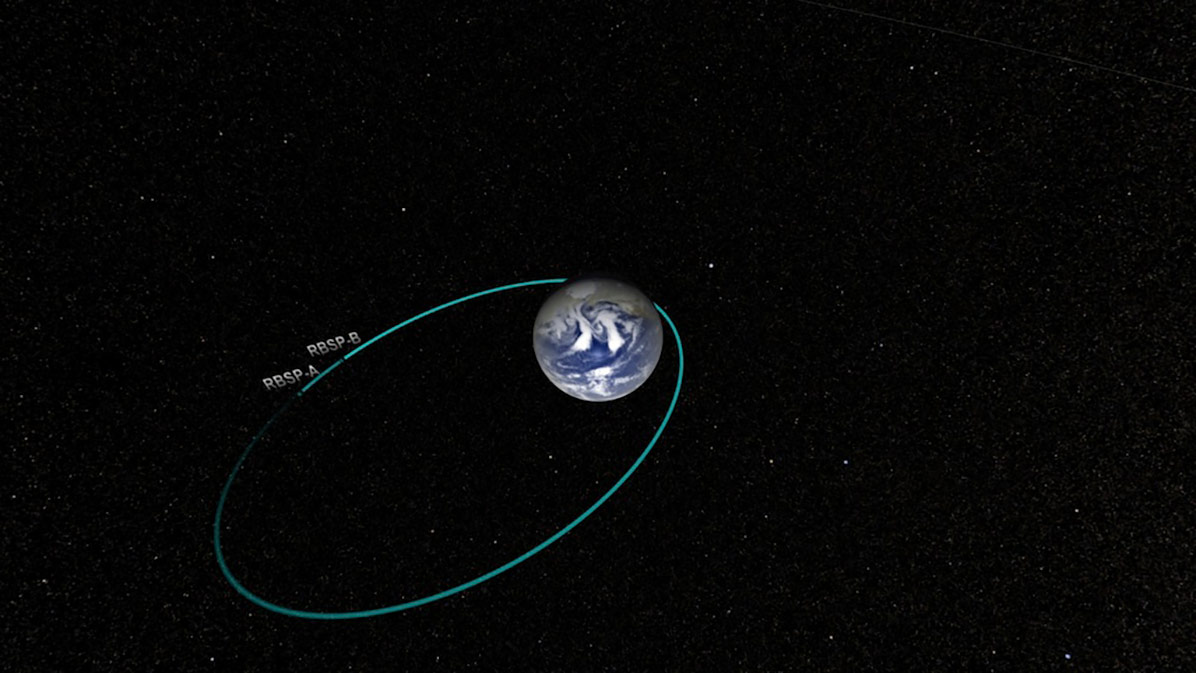
CREDIT: NASA’s Goddard Space Flight Center
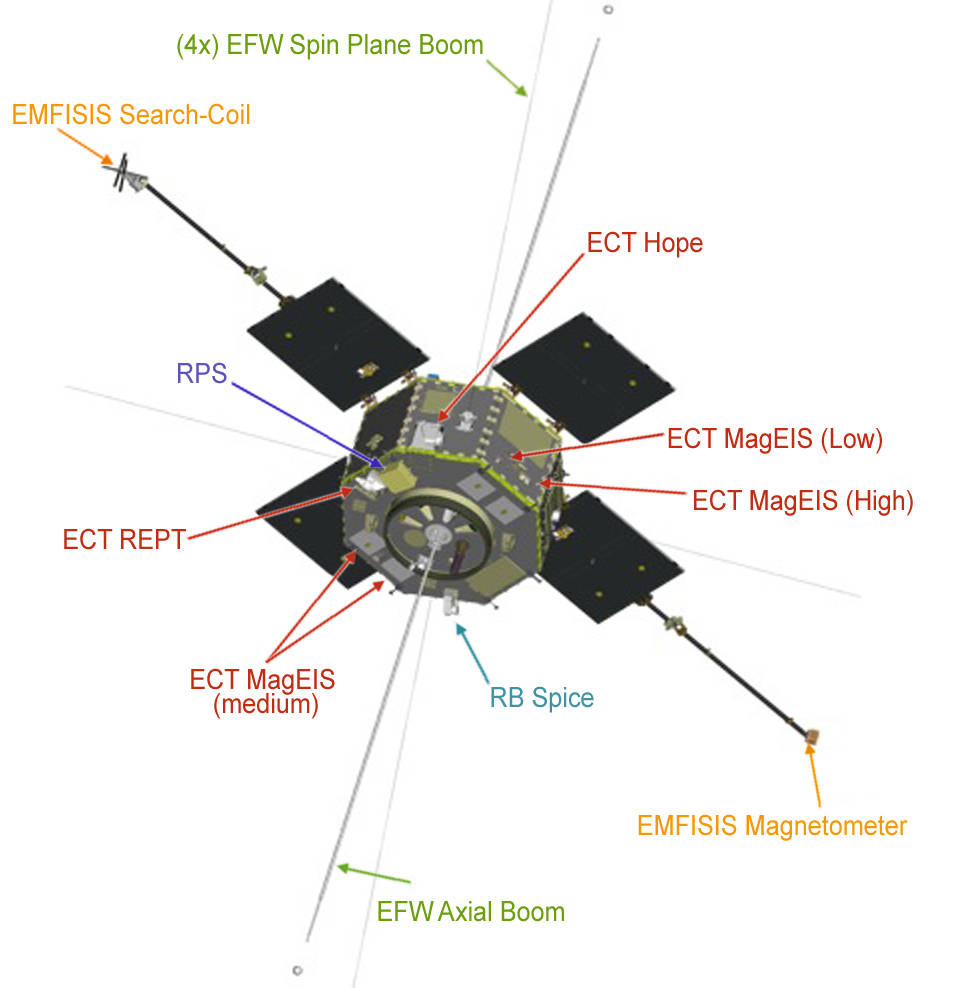
Data from REPT-A, powered up on Sept. 1, clearly shows the outer belt’s high electron count (top two graphs) and the inner belt’s high proton population (lower two graphs).
The graphs provide an almost 3-D view of the belts’ particle populations, with the outer belt displaying as the two high electron peaks, and the inner belt as the high proton peaks; the area close to and including Earth is at the rough center point of the graphs. “These are textbook measurements of the outer belt, the slot between the belts, and the inner belt,” says LASP’s Daniel Baker.
Credit: LASP/LANL/UNH
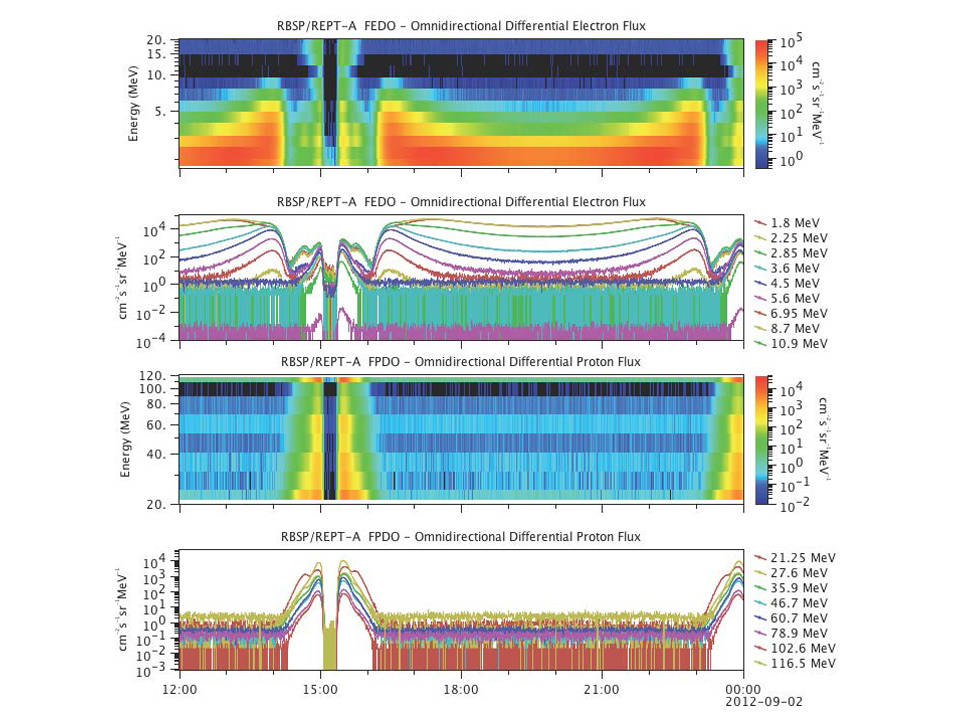
Radiation Belts Causing Partial Acceleration
Recent observations by NASA’s twin Van Allen Probes show that particles in the radiation belts surrounding Earth are accelerated by a local kick of energy, helping to explain how these particles reach speeds of 99 percent the speed of light.
Credit: G. Reeves/M. Henderson
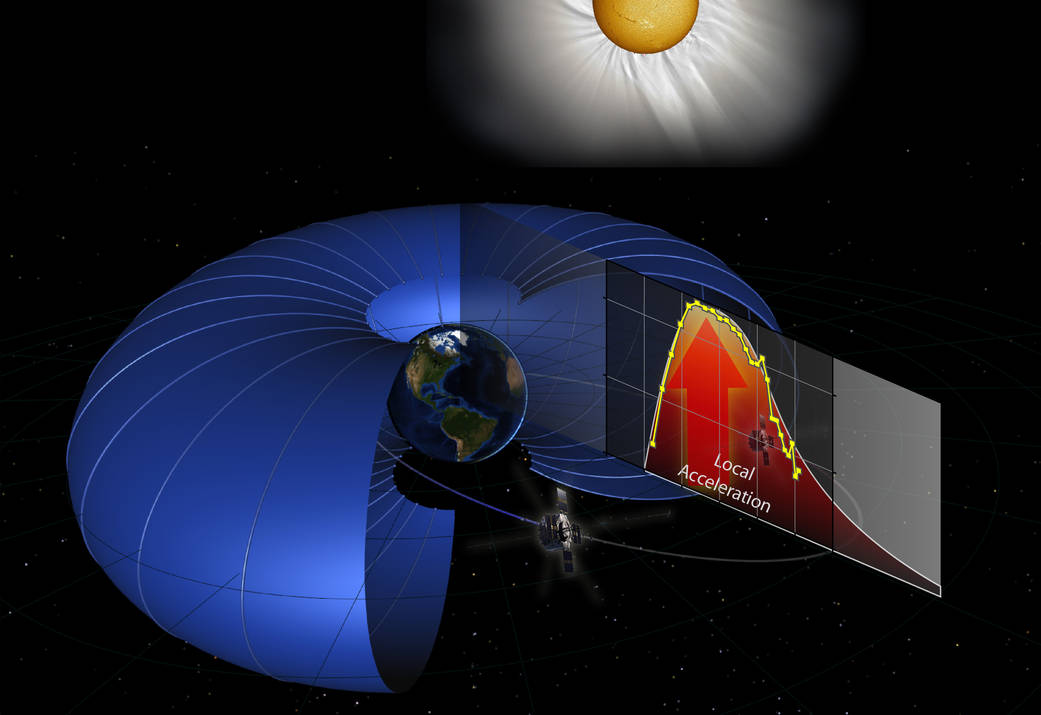
CREDIT: NASA’s Goddard Space Flight Center

